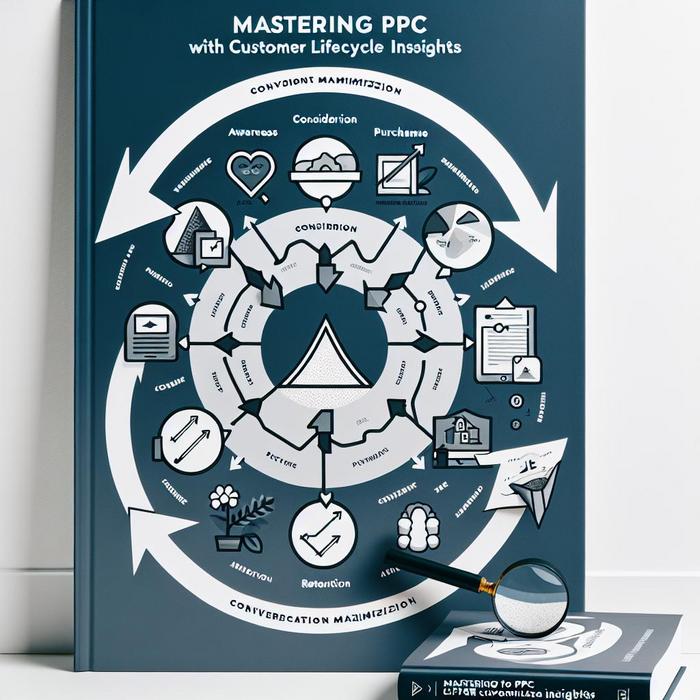Efficiently Streamlining Marketing Efforts: A Comparative Look at PPC Automation Platforms
As high-level executives operating in a digital world, you are the architects behind unique marketing strategies. Such designs should ideally simplify processes while maintaining, or better, increasing efficiency and effectiveness. Today, we’ll delve into a critical tool that redefines simplicity in marketing strategy- Pay-Per-Click (PPC) automation. For clarity, we’ll examine how different PPC automation platforms stack up against each other and the role of a certain optimization strategy in achieving targeted results.
Google Ads Vs. Meta Ads: The PPC Automation Platform Showdown
In this corner, we have Google Ads, a dominant player in the advertising landscape. Known for its robust set of features and comprehensive coverage, Google Ads offers advertisers an opportunity to reach a vast target market. Its strength lies in its effective ad placement strategy that ensures that every ad dollar counts.
On the other hand, Meta Ads takes its strength from its unrivalled demographic targeting capabilities. Boasting an enormous user base, Meta capitalizes on user information and interests, thereby facilitating high precision in targeted ad campaigns.
So, how do you decide which platform is the best fit for your business? This decision boils down to your specific needs and objectives. While the wider coverage offered by Google Ads may be attractive for some, others might desire the granular targeting provided by Meta Ads.
Understanding the Secret Sauce: Optimization Strategies
Both platforms are formidable in their own rights, but it’s the underlying optimization strategy that makes all the difference. One such optimization strategy garnering attention lately is the one that focuses on maximizing the total value of conversions generated by a campaign.
This specific strategy operates on two bidding methods: Maximizing Conversion Value and Target Return on Ad Spend (tROAS). The former strives to get the most conversion value within your budget, and the latter aims for the highest conversion value based on the return on ad spend you set.
This strategy’s unique approach aligns the ad spend with the actual value derived from a conversion, making it a game-changer in the PPC landscape. For a clear view of this, we’ll point you to the detailed study that recounts how a significant increase in conversions and ROAS was achieved using this strategy.
TikTok Ads: The Dark Horse in PPC Automation
While Google and Meta are behemoths in the online advertising world, TikTok, with its fast-growing user base, has quickly made its mark in the PPC landscape. TikTok’s strength stems from its adeptness at putting ads in front of users in an engaging, interactive format.
Starting to gain traction in marketing strategies, TikTok, like Meta, also benefits from granular demographic targeting. But its real strength lies in its user engagement levels. This platform provides an AI-Driven Campaign Insight which can give your business a competitive edge by engaging younger audiences.
Conclusion-
To wrap up the first half, remember that the right PPC automation platform for your business hinges on your specific marketing objectives. Google, Meta, and TikTok all have their individual strengths. Taking into account these factors along with the secret ingredient – a maximizing conversion value strategy – your business can achieve an optimal return from its ad spends. As a guiding principle, remember: the right platform coupled with an effective strategy equals marketing simplicity.
We’ll delve deeper into this in the next part, where we will provide more insights about these platforms, and further illustrate how this strategy can be adopted and utilized for maximum benefits. Stay tuned!
LinkedIn Advertising: Mastering the B2B Space
Pivoting to another corner of the digital advertising ring, we find LinkedIn. Known primarily as a platform for professional networking, LinkedIn has steeped its name in the domain of B2B advertising. Unlike the consumer-focused platforms like Google and Meta, LinkedIn offers a specialized experience tailored to target professionals with your campaigns.
This unique ability to target users based on their professional background and interests is one that not all platforms share. It is these precise targeting capabilities that make LinkedIn stand out. If the main objective of your business is to target professionals and companies, LinkedIn provides unmatched features to help you achieve this goal.
Microsoft Ads: Creating a Niche
Microsoft Ads, though often eclipsed by google, presents a more than a viable alternative. The platform offers much of the same functionality but has a decidedly less competitive environment. For specific industries, this means an opportunity to maximize exposure with potentially lower ad costs.
While Microsoft’s audience is smaller than Google’s, its users are decidedly unique. In fact, Microsoft boasts an audience of over 140 million users who aren’t reached through Google Ads. For marketers and executives seeking out new market segments, Microsoft Ads provides a fresh playing field.
As with any marketing strategy, your choice of platforms should take into account the return on your ad spending. Each platform offers unique opportunities to reach distinct markets and achieve varying campaign objectives. The key is to effectively leverage the data-driven tools each platform provides to reach your goals.
Merging Tech with Strategy: Driving High-Impact Transformation
Though choosing the right platform is an important decision, the strategy adopted equally matters. While each PPC automation platform offers its specializations, the ultimate value derived from your ad spending depends on effective advanced ad analytics and tailored optimization strategies.
These in-depth analyses help businesses make data-driven decisions, pinpointing the precise conversion value their ad campaigns generate. This allows them to strategically adjust their campaign settings and effectively allocate their budget in real-time. It is this dynamic control that is the central pillar to the performance of any business’s ad campaigns.
Where to next?
In this intense digital chess game, your business is more than just another pawn. With the right optimization strategies and platforms, you’ve got a game-winning combination. Like the grandmasters of chess, knowing your pieces and exploiting their strengths to their fullest potential is key.
In the next segment, we will delve further into the intricacies of these powerful ad platforms and expound on how a well-executed strategy can set you leagues apart from the competition. Until then, keep your gears in motion and remember: optimal ad spend returns are not achieved by chance, they are a result of intelligent design. Stay ahead of the curve!











